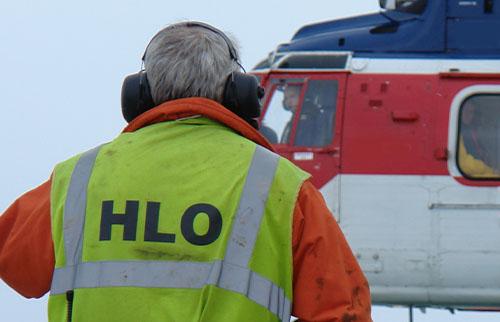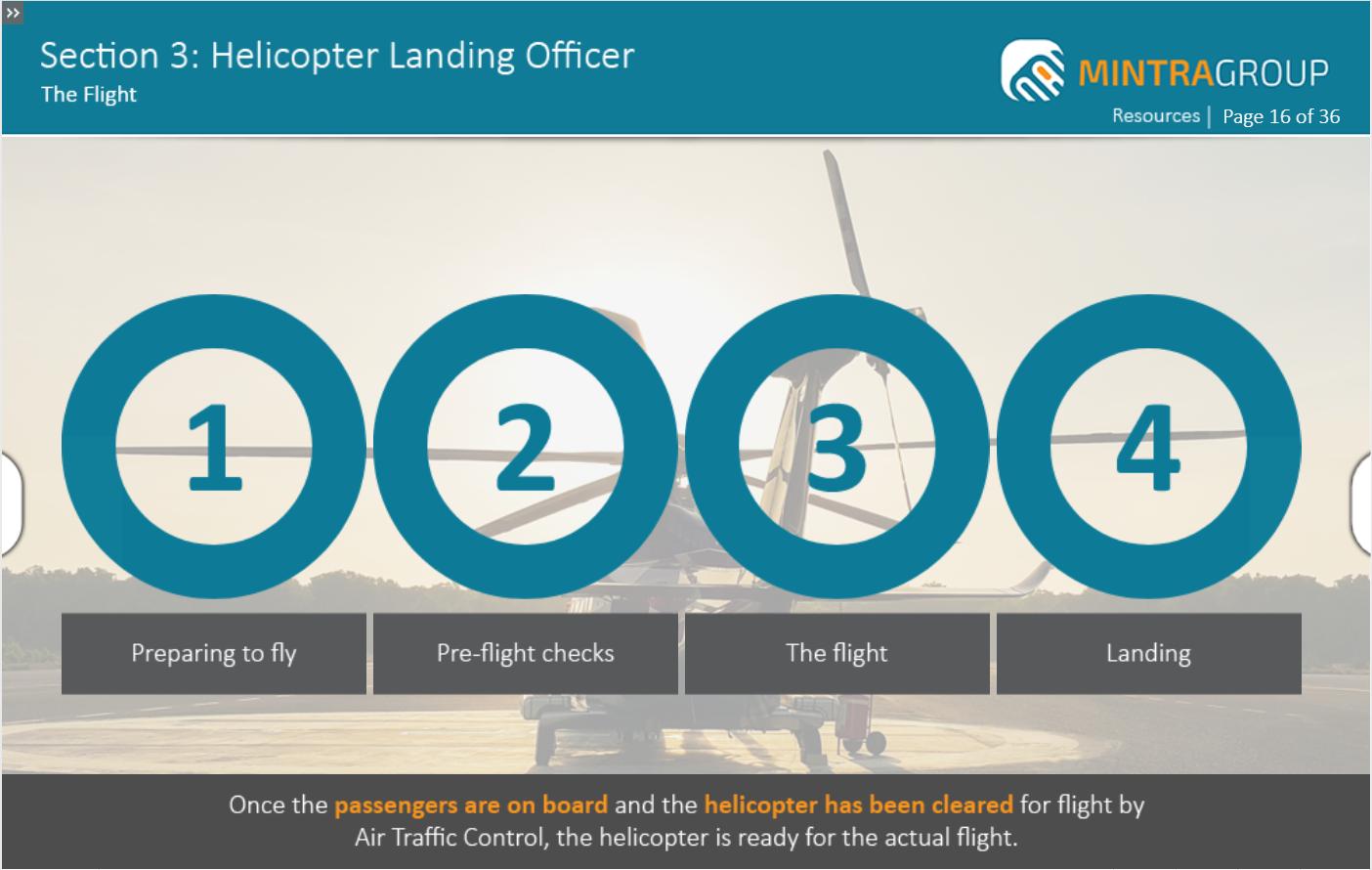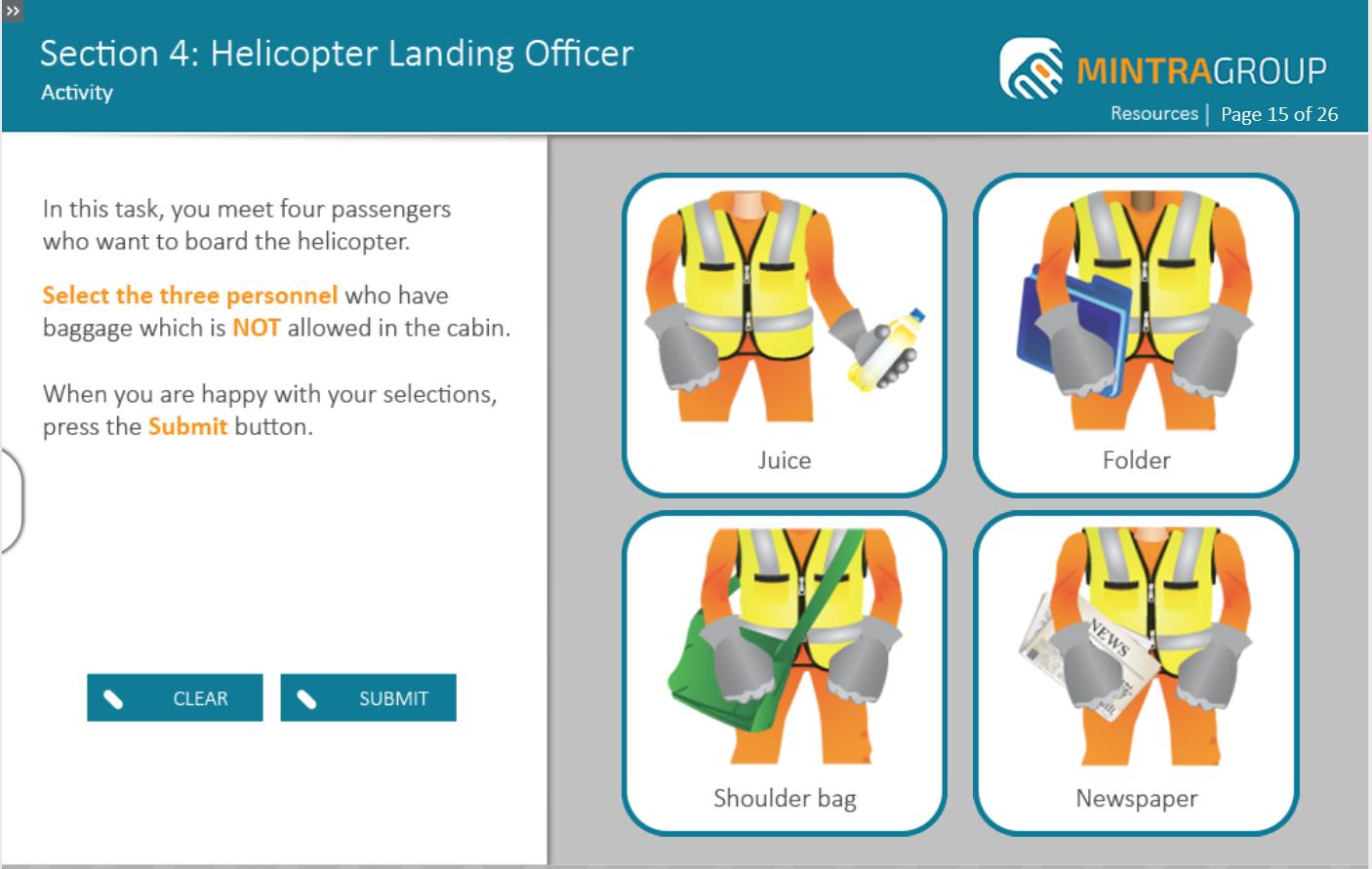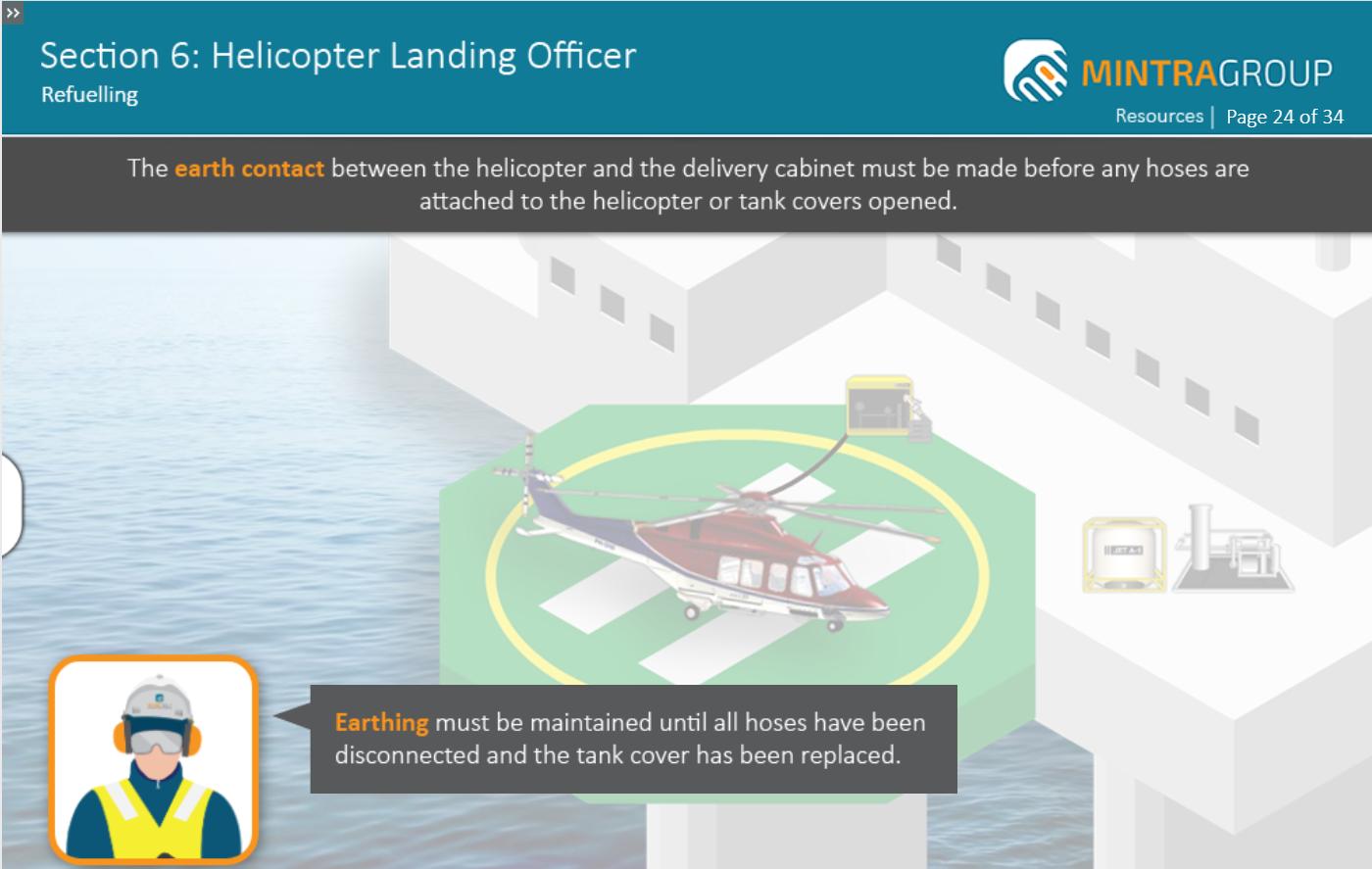Buy and assign to
multiple learners
Instant access
via email link
Instant certificate
via email
Further Information - Helicopter Landing Officer (HLO) Online Training
Description
Who is this course for?
Helicopter Landing Officer (HLO) Online Training is suitable for personnel responsible for assisting helicopters to land safely offshore (Helicopter Landing Officer (HLO) and Helideck Assistant (HDA))
Is previous experience required?
You do not need prior knowledge or experience to complete this course and it is assumed that you are competent in your designated role
How will this course benefit me?
This course aims to provide learners with industry best practice in relation to Helicopter Landing Officer (HLO) duties and consists of the following sections:
Section 1: Laws and Regulations Governing Helicopter Traffic
Section 2: Introducing the Helideck: Markings and Equipment
Section 3: In Flight Mode: Preparing for a Typical Helicopter Flight
Section 4: Managing Helideck Operations
Section 5: The Importance of Communication
Section 6: Aviation Fuel and Refuelling Operations
Section 7: Fire Safety
Section 8: Managing Emergency Situations
How will this course benefit my company?
By ensuring you have an overview of industry best practice in relation to Helicopter Landing Officer (HLO) duties
What standards are referred to in this course?
- Management of Offshore Helideck Operations 1993
- Civil Aviation Publication (CAP) 437
- Well (Design and Construction, etc.) Regulations 1996 Approved Codes of Practice
- Legislation referred to:
- UK Offshore Operators Association (UKOOA)
- Civil Aviation Authority (CAA)
- Maritime and Coastguard Agency
- United Kingdom Continental Shelf (UKCS)
- International Air Transport Association (IATA)
Is there an assessment?
Once you have completed the course, you will be asked a series of questions to check your knowledge and understanding. These are based on the learning objectives for the course and have a pass mark of 80%.
Learning Objectives
• Give an overview of current legislation and regulations covering helideck operations
• Give an overview of helideck responsibilities and best practice for ensuring safe operations
• Describe typical training and competence requirements for helideck personnel
• Identify the core PPE and emergency equipment requirements for helideck personnel
• Identify core fire-fighting equipment that you would expect to find on the helideck
• Identify the communication equipment that you would expect to find on the helideck
• Give an overview of the typical types of rescue equipment that should be found on a helideck
• Describe the requirements for helideck markings
• Describe the requirements for helideck lighting
• Explain why friction on the helideck is important
• Describe the requirements for rope nets on a helideck
• Give examples of typical helideck considerations
• Describe the requirements for the use of meteorological equipment
• Describe the preparations that should take place prior to take-off
• Describe the pre-flight checks that should take place
• Describe the process that should take place once a helicopter is ready to take-off and what happens once it is underway
• Describe the process that should take place in preparation for landing and explain what happens once a helicopter has landed
• Describe the duties of helideck personnel in advance of a helicopter landing
• Explain how to safely supervise the movement of passengers, baggage and cargo to and from the helicopter
• Give an overview of different types of baggage and typical baggage weight restrictions
• Explain the importance of being familiar with the management of dangerous goods and give examples of dangerous goods
• Explain the requirements for a flight manifest
• Explain the importance of communication for successful helideck operations
• Explain how to transmit and receive radio messages between the helicopter and installation and the importance of advising the pilot of wind and sea conditions
• Give an overview of the phonetic alphabet and explain why it is used in offshore radio communication
• Explain what to do in the event of an emergency or ‘radio silence’
• Demonstrate common helideck hand signals
• Identify common hazards associated with refuelling
• Describe a typical refuelling system
• Explain the importance of supplying clean fuel to helicopters and describe how to achieve this
• Describe the checks that should take place when taking fuel samples
• Give an overview of the refuelling process
• Explain what is meant by the ‘fire triangle’
• Explain how fire spreads
• Describe how to extinguish a fire
• Give an overview of the different fire classifications
• Explain what is meant by ‘flashpoint’ and ‘ignition temperature’
• Explain the importance of ensuring that adequate fire protection is provided for all helideck operations
• Give examples of potential emergency situations
• Explain what is required to co-ordinate rescue operations in the event of an emergency
• Describe what to do when making a rescue during a fire situation
• Explain what to do in the event of a crash onto the helideck
• Describe what to do in the event an emergency landing situation
• Explain what to do in the event of a crash into the sea
• Describe the requirements for a ‘safe deck’
• Describe the considerations for embarking in strong winds
Assessment
Exam in the e-learning course
System Requirements
• Internet access - users will need a device with a web browser and internet connection
• System - runs on computers, tablets and mobile devices using Windows 7 and above and MAC OS devices running IOS 11 and above
• Browsers - Edge, Chrome, Firefox and Safari
• Minimum browser size – none
• Audio – requires device speaker or headphones
Recommended Courses
Reviews
Insights & News
At Mintra, we're so much more than just a team—we're a force driving innovation and excellence in maritime training across Europe.
We’re excited to be taking the stage at one of Europe’s leading showcases of organisational learning.
We are delighted to share the exciting news that our People and Culture team has been shortlisted for the prestigious cHeRries Awards!




